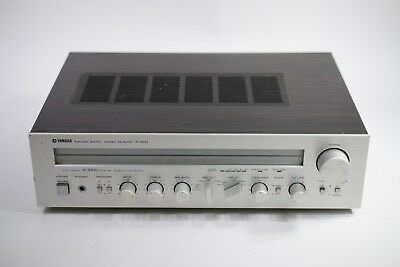I few months ago I bought a Yamaha R-500 in great condition from a local seller for $350. It’s a great looking little unit with a sleek design and an attractive faux wood veneer metal chassis that puts out 40 watts per channel (into 8Ω) with an extremely low 0.005% total harmonic distortion.
What attracted to me to this Yamaha, besides the power rating, the design and the low distortion, was Yamaha’s “Natural Sound” moniker. I had never heard a Yamaha receiver from this era and wanted to experience how such a unit would work in my system. I was not disappointed.
The R-500 does indeed sound natural. It has a clean, clear sound that reproduced jazz music extremely well and did a very good job with straightforward rock music and some classical pieces. The tonality of the R-500 struck me as very accurate and its sound always very listenable. In the time I had it in my system, I found myself enjoying it much more often than not.
Where the R-500 fell short was with recordings with more scale and power. When the receiver was pushed by bigger production rock albums or symphonic pieces, its limitations were exposed. The R-500 does not scale up well and struggled to convey some of my favorite recordings, particularly the more dynamic and demanding classical pieces that other lower powered amps I’d tried had been able to manage.
If I were strictly a “jazz guy,” I’d have been happy to keep the Yamaha R-500 in my system and bask in the way it presents acoustic instruments recorded in smaller studios and clubs with a crisp, captivating sweetness. But with my tastes shifting these days toward the drama and eye popping fireworks of large scale orchestral pieces recorded in large halls, I found I had to move on from the R-500 in search of an amp or receiver that could bring such recordings to life.
